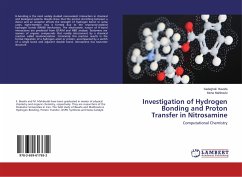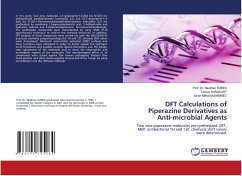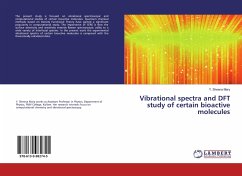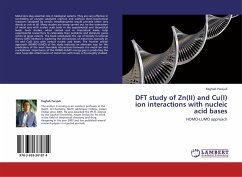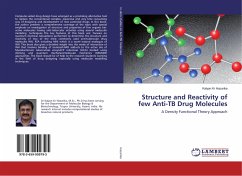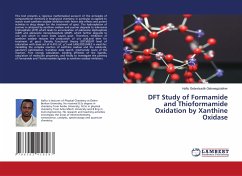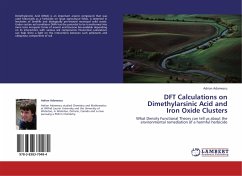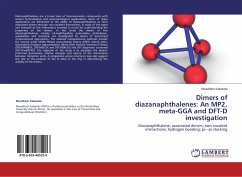
Dimers of diazanaphthalenes: An MP2, meta-GGA and DFT-D investigation
Diazanaphthalene; associated dimers; non-covalent interactions; hydrogen bonding; pi---pi stacking
Versandkostenfrei!
Versandfertig in 6-10 Tagen
27,99 €
inkl. MwSt.

PAYBACK Punkte
14 °P sammeln!
Diazanaphthalenes are a broad class of heteroaromatic compounds with several technological and pharmacological applications. Some of these applications are attributed to the ability of diazanaphthalenes to form associated dimers through non-covalent interactions. A study of the types and strength of the interactions involved is crucial for understanding the properties of the dimers. In this study the dimers of five diazanaphthalenes, namely 1,8-naphthyridine, quinoxaline, phthalazine, quinazoline and cinnoline, are investigated by means of theoretical computational approaches. The selected com...
Diazanaphthalenes are a broad class of heteroaromatic compounds with several technological and pharmacological applications. Some of these applications are attributed to the ability of diazanaphthalenes to form associated dimers through non-covalent interactions. A study of the types and strength of the interactions involved is crucial for understanding the properties of the dimers. In this study the dimers of five diazanaphthalenes, namely 1,8-naphthyridine, quinoxaline, phthalazine, quinazoline and cinnoline, are investigated by means of theoretical computational approaches. The selected computational methods include the second order Möller-Plesset perturbation theory (MP2), hybrid meta-Generalized Gradient Approximation (Meta-GGA) Density Functional Theory (DFT/MPWB1K, DFT/M05-2X and DFT/M06-2X) and DFT dispersion corrected (DFT-D/wB97XD). The objective of the study is to elucidate the dimers' preferred geometries, relative energies and nature of the interactions between monomer units. A comparison across structures may also suggest the role of the position of the N atom in the ring in determining the stability of the dimers




